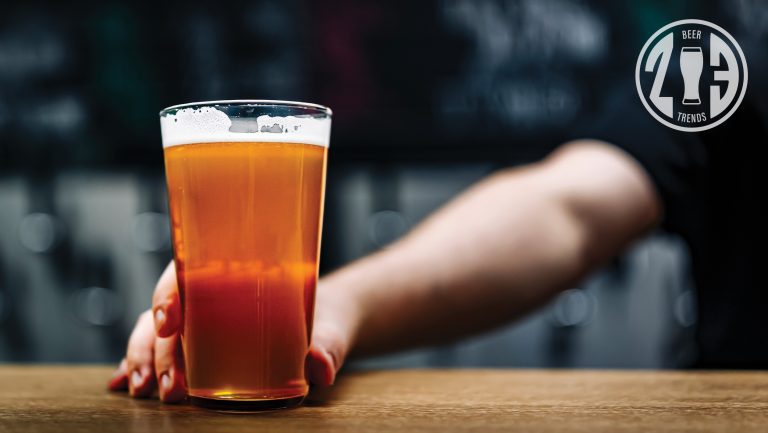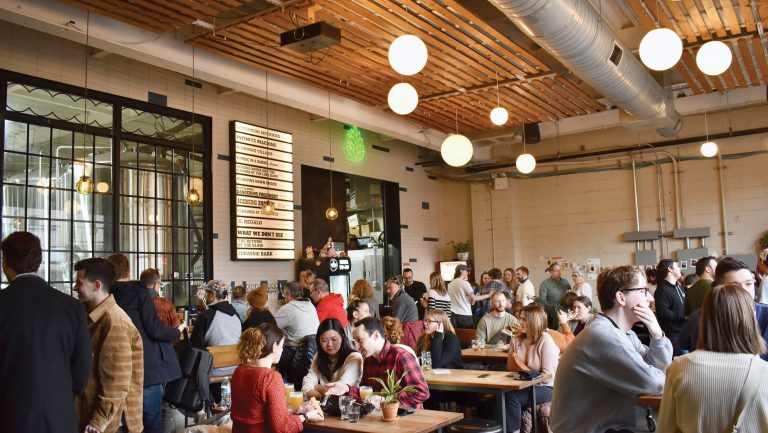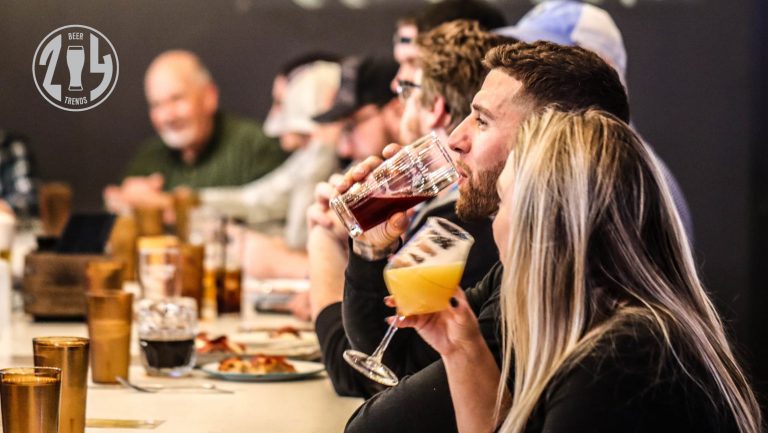Last year, the brewing industry surfed the choppy waves of carbon dioxide shortages, a tight labor market, and spiking expenses, as inflation impacted everything from cans to grains to freight.
“Nearly everything costs more than it did before the pandemic,” says Bart Watson, the chief economist at the Brewers Association. “Brewers haven’t been able to fully pass those costs onto customers, meaning lower margins.”
Compounding matters, “capital is harder to come by and COVID-19-related government aid programs have come to an end,” says Justin Catalana, the CEO and cofounder of Fort Point Beer Company in San Francisco.

Don’t miss the latest drinks industry news and insights. Sign up for our award-winning newsletters and get insider intel, resources, and trends delivered to your inbox every week.
With draft sales yet to reach pre-pandemic heights, breweries are right-sizing for a profitable future. The Lost Abbey in San Marcos, California, is reducing its brewery’s square footage and selling its 30-barrel brewing system, downsizing to a smaller setup. Modern Times, which Maui Brewing bought in 2022, closed five West Coast taprooms last year, and Epic Brewing also shut its Denver brewery and taproom. According to David Cole, the Salt Lake City brewery’s founder, volume had dropped so much that the overhead was no longer feasible.
Seeking new sales opportunities, breweries will continue exploring sparkling hop water, ready-to-drink cocktails (like Boston Beer Company’s Loma Vista Tequila Soda), and beverage crossovers, including the forthcoming Cantaritos by Jarritos hard soda from Anheuser-Busch InBev. Facing another year of uncertainty and evolving customer tastes, here are six more trends that will guide the brewing industry throughout 2023.
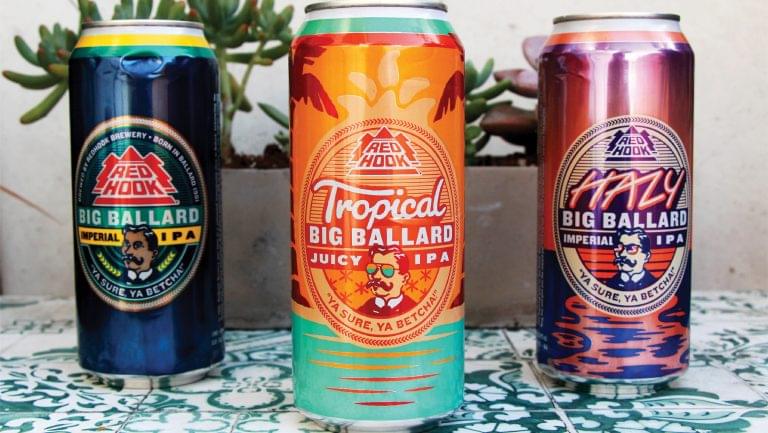
1. Consumers Seek Value in Bulk Beer and Higher Alcohol Levels
Inflation is ballooning, and “we’re seeing signals that the dollar needs to go farther for consumers,” says Jamie Wideman, the vice president of innovation for Molson Coors Beverage Company. “To remain relevant and competitive, brands need to add value.”
Consumers will start seeking brands that deliver “the most bang for their buck,” says Jimmy Seifrit, the senior brewmaster at 10 Barrel Brewing Co. in Bend, Oregon. That could mean buying in bulk, such as 10 Barrel’s 18-pack of Pub Beer that might sell for $15, or seeking “higher-ABV products to get more buzz for the dollar.”
In fall 2021, 10 Barrel introduced the All Ways Down double IPA that weighs in at 9% ABV, part of a broader push toward stronger beers. Sierra Nevada Brewing Co. makes Big Little Thing, also 9% ABV, and New Belgium Brewing is led by the Voodoo Ranger Imperial IPA (9%) and Juice Force IPA (9.5%), the latter set to be released in 12-packs in 2023.
The trend has also buoyed Redhook Brewery’s trio of brawny Big Ballard IPAs, says Jason Dodson, the Seattle brewery’s brand manager. The growing franchise includes an 8.6% ABV imperial version sold in 18-packs of 12-ounce cans for around $20 to $23.
Higher levels of alcohol is changing “the conversation about how to define value in the craft segment,” says Dodson.

2. Breweries Will Trim SKUs and Focus on Specific Styles
Increasing competition for shelf placements in grocery and liquor stores will lead breweries to eliminate slow-moving brands and rally around core beers. Prioritizing profitability “will result in smaller distribution footprints and tighter portfolios of the highest-performing SKUs,” says Catalana, where the flagship is the kölsch-style ale KSA. “Fort Point is focused on doing fewer things better.”
The industry is glutted with copycat beers. Does the world need another hazy IPA? The Bruery and its sister brand, Offshoot Beer Co., based in Placentia, California, are reducing the beers they package and market “unless they are truly different,” says CEO and cofounder Barry Holmes.
Focusing on fewer beers can help breweries better weather the vagaries of ingredient availability. Moreover, a tight beer portfolio “makes it easier to keep really fresh beer in the marketplace,” says Matt Riggs, the brewer and owner of Riggs Beer Company, in Urbana, Illinois, which produces four year-round beers, including a hefeweizen and American lager.
Instead of aiming to appease everyone, breweries will also double down on “specific styles of beer,” says freelance journalist Beth Demmon, the author of the forthcoming The Beer Lover’s Guide To Cider. Sacred Profane Brewing in Biddeford, Maine, only makes two kinds of beer, a pale and dark lager, eliminating overwhelming choice and appealing to drinkers “seeking quality over quantity.”
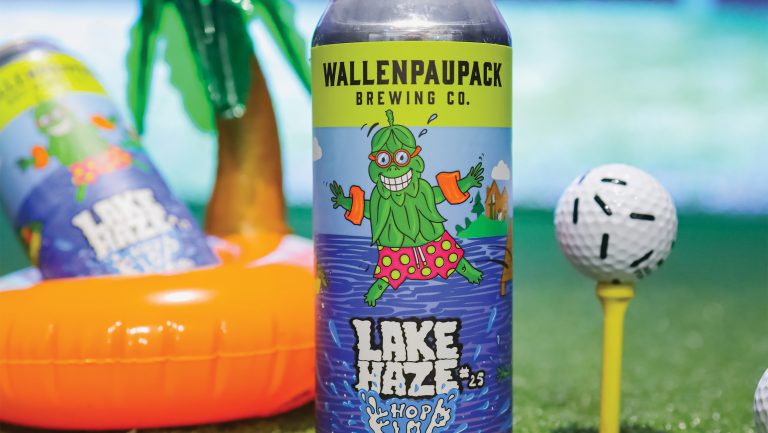
3. Breweries Reclaim Carbon Dioxide in the Face of Supply Chain Disruptions
The carbon dioxide shortage will cause innovation to “grow as brewers look for ways to solve gas supply availability and lessen dependence on delivery,” says Julia Herz, the executive director of the American Homebrewers Association.
In November, New Glarus Brewing in Wisconsin, finished installing equipment to reclaim its carbon dioxide, which is compressed into liquid and stored for later usage. Texas company Earthly Labs created the CiCi system that lets breweries capture, purify, and reuse carbon dioxide created during fermentation. (Roadhouse Brewing, Trillium Brewing, and Alvarado Street Brewery are among the breweries using the technology.)
Breweries are also turning to a traditional technique called spunding to naturally carbonate beers, trapping carbon dioxide in tanks during fermentation. “We purchased a few more spunding valves to allow us to carbonate more of our beer naturally,” says Logan Ackerley, the head brewer at Wallenpaupack Brewery in Hawley, Pennsylvania.
Maximizing resources benefits the environment and bottom line. “Most of these choices also impact the efficiency of making beer, which saves money,” says Brandon Proff, the managing partner at Our Mutual Friend Brewing Co. in Denver.

4. Global Crises Spur More Local Beers
The ongoing war between Ukraine and Russia, which together export more than a quarter of the world’s wheat, and a terrible harvest for European hops—German crops dropped around 20 percent, while Czech yields fell more than 40 percent from 2021—will lead breweries to look closer to home for raw materials.
“My hope is that brewers will see that locally sourced ingredients can be reliable when times are uncertain,” says Andrea Stanley, the owner and maltster of Valley Malt in Holyoke, Massachusetts, which makes malts with locally grown barley, rye, wheat, and more.
To that end, researchers are developing barley varieties able to weather distinct climates, says Brent Manning, the cofounder of Riverbend Malt House in Asheville, North Carolina. It worked with Virginia Tech to create Avalon, a disease-resistant winter variety that can handle heavy rainfall. Such efforts will “support a more diverse and durable crop of quality malting barley for the challenges ahead,” says Manning.
Going local is also a good sales pitch. “You can connect with your community if you can say your ingredients are coming from a farm down the street,” says Zeke Ottemiller, the beer brand marketing manager for Crooked Hammock Brewery, which is based in Lewes, Delaware, and sources grains from the nearby Proximity Malt.
Tapping into a region’s unique natural bounty can also deliver market differentiation. At Ferment Brewing in Hood River, Oregon, brewmaster Dan Peterson captured local yeast that lends a touch of banana and lemony zing to its White River Saison. The brewery also works with the local forestry department to pick Douglas fir tips for its Woodsmen Porter, the landscape in liquid form. “Forests and farms just outside of town can provide a deeper layer of terroir,” says Peterson.
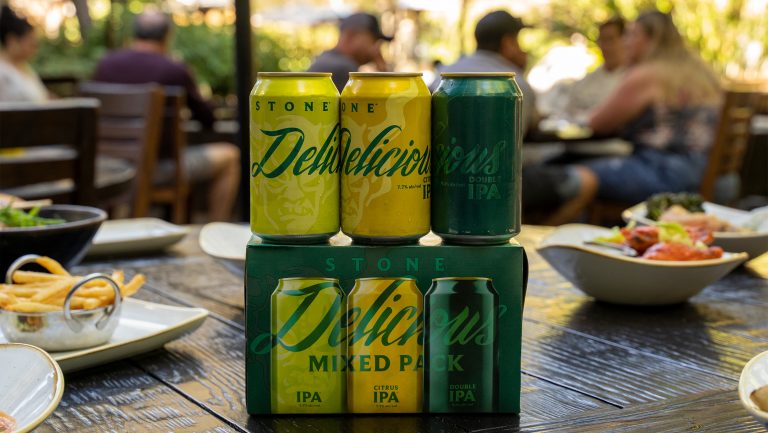
5. Beer Merch and Variety Beer Packs Offer Sales Opportunities
The pandemic caused a spike in online shopping, and the digital shift will continue to lead breweries to emphasize online sales for merchandise and, where legally permitted, beer. Tree House Brewing, based in Charlton, Massachusetts, offers house-roasted coffee, pennants, spare-tire covers, and even Tree House trading cards featuring crew members.
“As online shopping increases, we’re willing to try more,” says Erin Smith, the vice president of marketing for Stone Brewing in Escondido, California. The brewery sends beer directly to three states, plus Washington, D.C., and ships clothing, condiments, candles, and more nationwide.
With most anything available by clicking a button, breweries are looking to make it easier to buy beers by creating variety packs. In December, Stone debuted a mixed six-pack featuring Delicious IPA and the new Double Delicious and Citrus Delicious IPAs.
Variety packs are also fostering aftermarket interactivity. Primary Colors Brewing of Chicago produces a mixed six-pack featuring three different styles, such as a gose, hazy IPA, and Belgian pale, and encourages customers to try blending the beers.
The Most Wonderful Beer of the Year variety 12-pack from Tröegs Independent Brewing includes six different beers, and customers are encouraged to combine Grand Cacao Chocolate Stout and DreamWeaver Wheat with the Mad Elf holiday ale.

6. Taprooms Will Become Attractive Interactive Hubs
People are dropping masks and making plans with family and friends, seeking compelling places to gather that meet the needs of the young, old, and every age in between. A bland taproom only offering cold beer won’t cut it.
“A unique taproom experience will continue to be a major factor when deciding where to spend time and money,” says Ackerley. Wallenpaupack’s second taproom, which opened in 2021 in nearby Tafton, Pennsylvania, is called the Wake Zone and features indoor golf and sports simulators alongside a family friendly menu of flatbreads, tacos, and sliders.
Just outside of Rochester in Honeoye Falls, New York, Okay Beer Company opened in 2022 inside a bowling alley where customers can roll on 16 lanes, then crush house-made cream ales, cocktails, and smashburgers; there’s a kid’s menu too.
In August 2022, F.X. Matt Brewing Co. in Utica, New York, opened its outdoor biergarten that was “designed with the customer experience as priority No. 1,” vice president of operations Dan Voce says of the space that serves up concerts and experimental beers.
Highland Brewing in Asheville, North Carolina, is focusing on recreation at its 40-acre property, offering sand volleyball, a wooded hiking trail, disc golf course, run club, and corn hole league. “We’re finding success in developing our destination brewery,” says president and CEO Leah Wong Ashburn, “for people to engage with our brand where the beer is made.”

Dispatch
Sign up for our award-winning newsletter
Don’t miss the latest drinks industry news and insights—delivered to your inbox every week.
Contributing editor Joshua M. Bernstein is a beer, spirits, food, and travel journalist, as well as an occasional tour guide, event producer, and industry consultant. He writes for the New York Times, Men’s Journal, New York magazine, Wine Enthusiast, and Imbibe, where he’s a contributing editor in charge of beer coverage. Bernstein is also the author of five books: Brewed Awakening, The Complete Beer Course, Complete IPA, Homebrew World, and Drink Better Beer.

